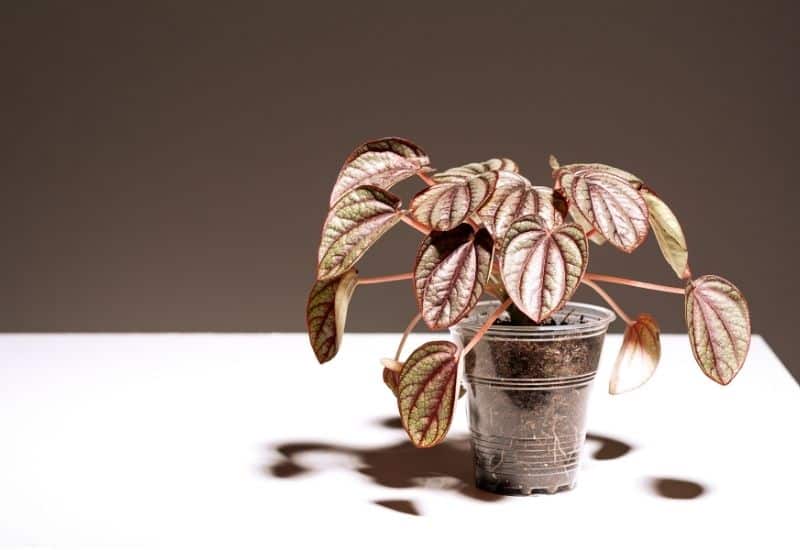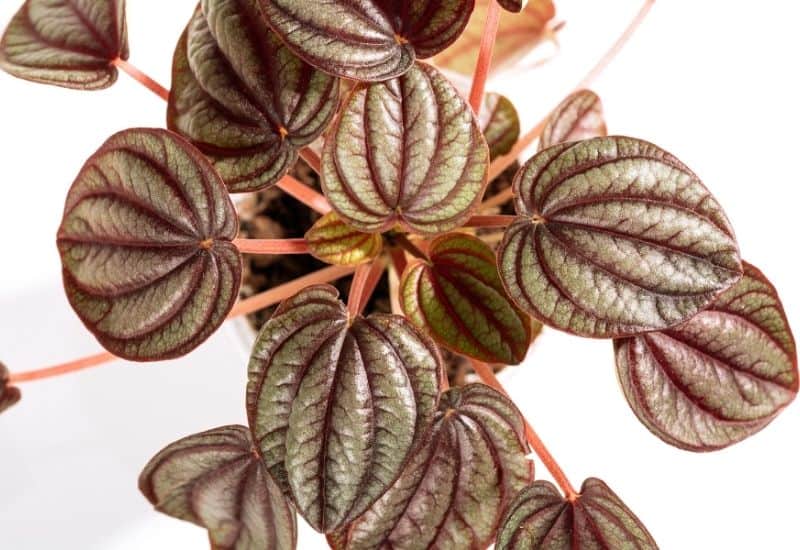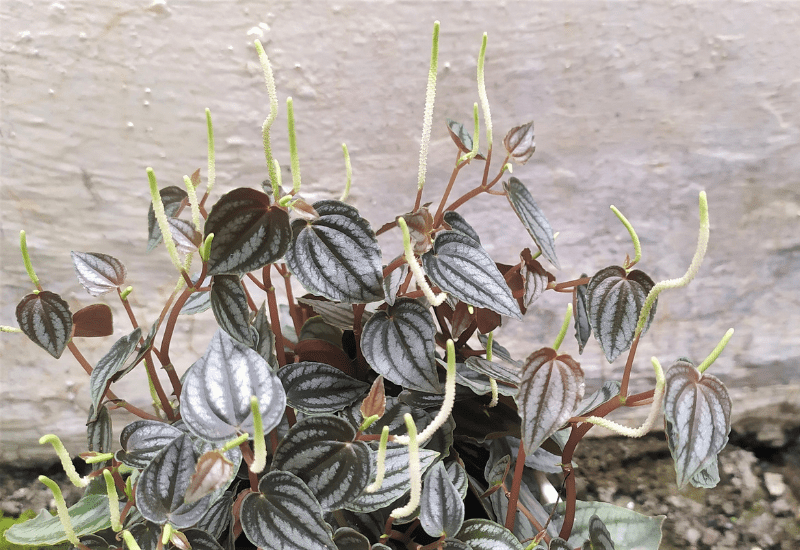Peperomia Piccolo Banda is a popular houseplant thanks to its bright, silvery-green leaves and small size. The plant is easy to care for, so it’s a great choice for both beginner and advanced houseplant enthusiasts.
Peperomia Piccolo Banda Care Guide Overview
- How To Plant (when & where)
- How To Grow (staking, watering, fertilizing, humidity, mulching)
- How To Trim And Prune
- How To Pot And Repot
- How To Propagate (when & how)
- And Pests and Diseases, Plant Species, Companions, Toxicity
Characteristics
- Scientific name and common names: Peperomia Albovittata, commonly called Piccolo Banda
- Origin: Rainforests of South America
- Indoor or Outdoor plant: Indoor
- Height and Structure: 8 to 12 inches tall with full, dense foliage
- Temperature: 65 to 75 degrees Fahrenheit
- Peperomia Piccolo Banda Flower Color: Green or yellow spikes
How To Plant the Peperomia Piccolo Banda

Planting Time
Peperomia Piccolo Banda is an indoor plant, so it can be planted at any time of the year. However, these plants tend to begin their growth cycle during the spring, so it’s best to plant or repot during this time.
Light
Peperomia Piccolo Bandas aren’t too picky when it comes to light. Medium light is best, but these plants can tolerate both bright light and shade. Direct sunlight, however, may cause the colors of the plant to fade. On the other hand, if the plant becomes leggy due to reaching for the sun, it can be moved to a brighter area.
Soil
These plants tend to be relatively easy to care for, but they do have specific soil requirements. The soil a Peperomia Piccolo Banda is planted in must be rich and should have either a slightly acidic or a neutral pH. It also needs to drain well to prevent root rot. Adding perlite to the soil can help the soil drain more effectively, and a perlite and peat mixture will help to retain just enough water without allowing the plant to become waterlogged. Adding compost can boost the soil’s nutrients.
How To Grow the Peperomia Piccolo Banda

Growth Habits
Peperomia Piccolo Bandas grow quite slowly, and they only reach about 12 inches maximum, excluding their flower spikes. These plants do produce an abundance of new leaves each year during the growing months, however.
Watering
Peperomia Piccolo Banda, like all Peperomia varieties, is technically a succulent, which means they are very efficient at storing water. This also means that they’re susceptible to overwatering. These plants should only be watered when their soil has completely dried out. This is usually once every week or two. Piccolo Bandas will require less watering in the winter when they’re not growing.
Fertilizing
Peperomia Piccolo Bandas don’t require too much fertilizing. A balanced fertilizer can help to keep the soil’s pH neutral or slightly acidic. The fertilizer should be applied once a month, at most, during the growing season. Fertilizing should stop during the winter. If the plant’s bottom leaves begin to drop off, it’s being overfertilized, and the fertilizer should be diluted or fertilizing should be reduced.
Humidity
These plants are native to the damp jungle regions of South America, so they prefer a slightly elevated humidity, but they will do well in the average humidity level of a room. These plants only require extra humidity if the air in the room is very dry. Misting the plant occasionally will keep the plant healthy.
Trimming and Pruning
Any dead leaves on the plant can be trimmed away as they appear. Peperomia Piccolo Bandas can also be pruned just before the growing season. You can prune away any leggy areas or shape the plant into something more compact. Trimming or pruning just before the growing season will redirect energy into new leaves and can encourage the plant to produce denser foliage.
Pot And Repotting
Peperomia Piccolo Bandas can be planted in nearly any type of pot. However, it’s important to ensure that the pot has adequate drainage holes to prevent any buildup of excess moisture. Clay or ceramic pots tend to allow for more airflow, which helps the soil dry more quickly, so they’re often a great choice for succulents like the Peperomia Piccolo Banda.
Because they grow so slowly and stay so small, Peperomia Piccolo Bandas don’t usually need to be repotted more than once every two to three years. Most plants can live happily in the pot they arrived in for many years. Keep an eye out for plants that may be root bound, however, as these will need a larger pot in order to remain healthy.
peperomia piccolo banda propagation

Peperomia Piccolo Bandas are very easy to propagate. You can use a stem cutting, which can be placed in water or soil to root. Ensure that the stem has at least two leaves attached. A leaf from the plant can also be split in half. The leaf can be placed in soil and will begin to root shortly after planting.
Pests And Diseases
Peperomia Piccolo Bandas are largely resistant to pests and diseases. They can be susceptible to root rot if they’re overwatered, but this can be prevented by ensuring that the soil is allowed to dry fully between each watering. Occasionally, these plants may experience a pest problem. Neem oil can be sprayed on the plant’s leaves, and this should stop any pests from returning.
Plant Species
Peperomia Piccolo Banda is one of hundreds of Peperomia varieties, each with slightly different colors and shapes. Watermelon Peperomia, for example, has leaves striped with bright green and silver. Teardrop Peperomias are a trailing variety with pale green leaves. Ruby Cascade Peperomias have vibrant green and red leaves, and they’ll trail over the edges of their pot.
Companions
Because they’re houseplants, Peperomia Piccolo Bandas can be kept with any other plants that enjoy the same temperature and humidity levels. You can pair these small plants with other Peperomia varieties or other succulents to create a vibrant display. These plants also work well next to taller plants. Taller plants can also help to filter the sunlight that reaches the Peperomia Piccolo Banda.
Toxicity
Peperomia Piccolo Banda is non-toxic to people, dogs and cats.


